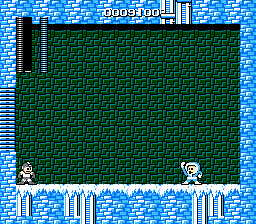Publisher: Capcom
Year: 1987
Genre: Platformer
Never send a man to do a robot’s job. Sometimes you have to fight robots with robots. A robot a day keeps Doc Wily away. Today’s game is Mega Man – the game that kicked off one of the greatest game franchises in history.
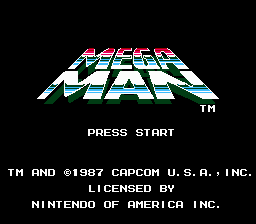
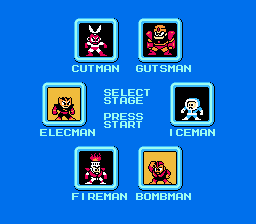
In Mega Man, you take the roll of the titular Mega Man (named “Rock” in the original Japanese, as in “rock and roll”), a humanoid robot made to “perform specific everyday duties.” Created by Dr. Wright (later, Dr. Light) and his treacherous assistant Dr. Wily, Mega Man becomes the world’s only hope when the disloyal Wily reprograms Wright’s next six humanoid robots to become Robot Masters (masters of other robots) and assist him in taking over the world. So, basically, a robot janitor has to defeat six powerful utility robots in a battle to the death.
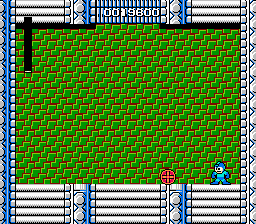
The two most unique elements of Mega Man, elements that have been included in every subsequent game in the series, are non-linear progression and the acquisition of new powers by defeating enemies. At the start of the game, and upon beating each of Wily’s Robot Masters, you get to select which of the robots you will battle next. Upon defeating a robot, they drop a power module that adds a new attack to Mega Man’s repertoire.
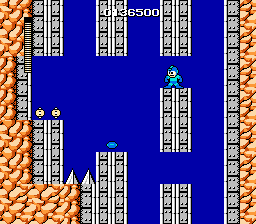
The weapons acquired through the game work in a sort of rock-paper-scissors progression, with each weapon being effective against one of the Robot Masters: ice beats fire, fire beats bomb, and so on and so on. Learning the correct order in which to face the Robot Masters is part of the challenge of the game. Some of the Robot Masters, furthermore, are exceptionally difficult to beat with your initial weapon, so choosing the first Robot Master to defeat is a substantial decision as well.
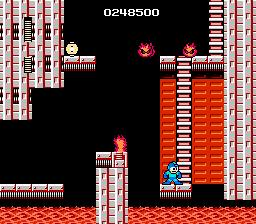
It may come as some surprise that I never had the first Mega Man game as a child, and I can pinpoint exactly why that is. The reason is rather infamous; in the United States, it was decided by Capcom’s American team that the anime-influence art would not resonate with an audience of American children. Therefore the decision was made to change the box art from:
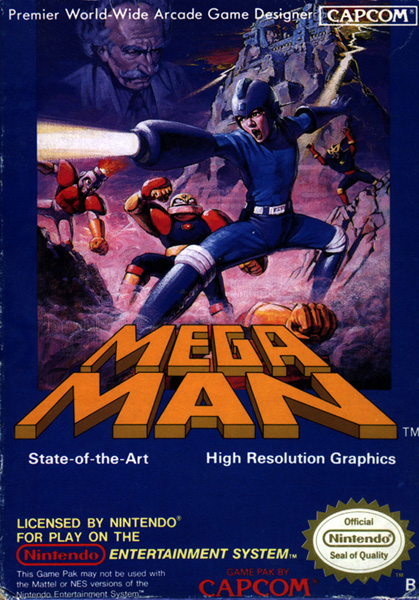
to:
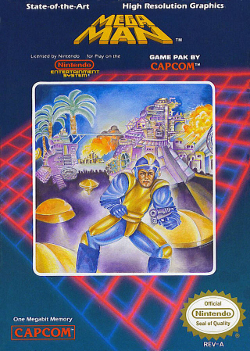
The Wikipedia entry for Mega Man insists that the game achieved great success by word of mouth, but I frankly didn’t know anyone who owned a copy of the original Mega Man. I remember specifically seeing the box art in Toys R Us and thinking, “Is this some sort of bizarre pinball game?”
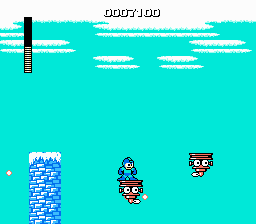
Mega Man is a classic Nintendo Hard game. Some of the levels are monstrously difficult (Ice Man’s floating platforms come to mind) as are some of the Robot Masters – I have literally NEVER beaten Fire Man without Ice Man’s weapon, and believe me, I have tried. The controls are at times a bit sticky, and sliding onto a platform whilst falling counter-intuitively requires expert timing.
John’s Rating: 3.5 out of 5. I know, I know – feel free to stone or crucify me as is your custom, but the game is flawed and unpolished, especially compared to later entries in the series. It is definitely worth playing, and is an interesting picture of how a good idea with imperfect execution can still spark a revolution in gaming.
